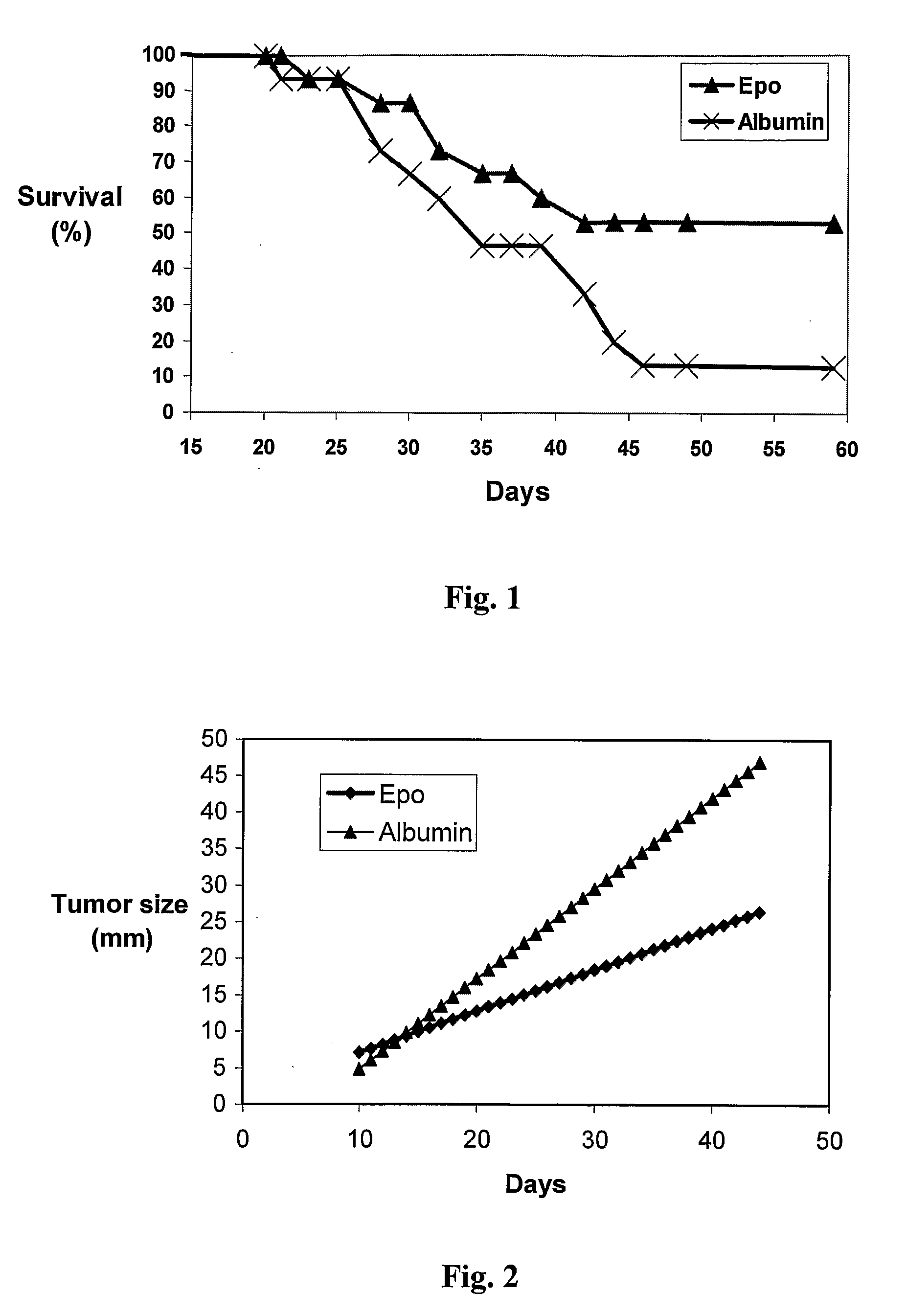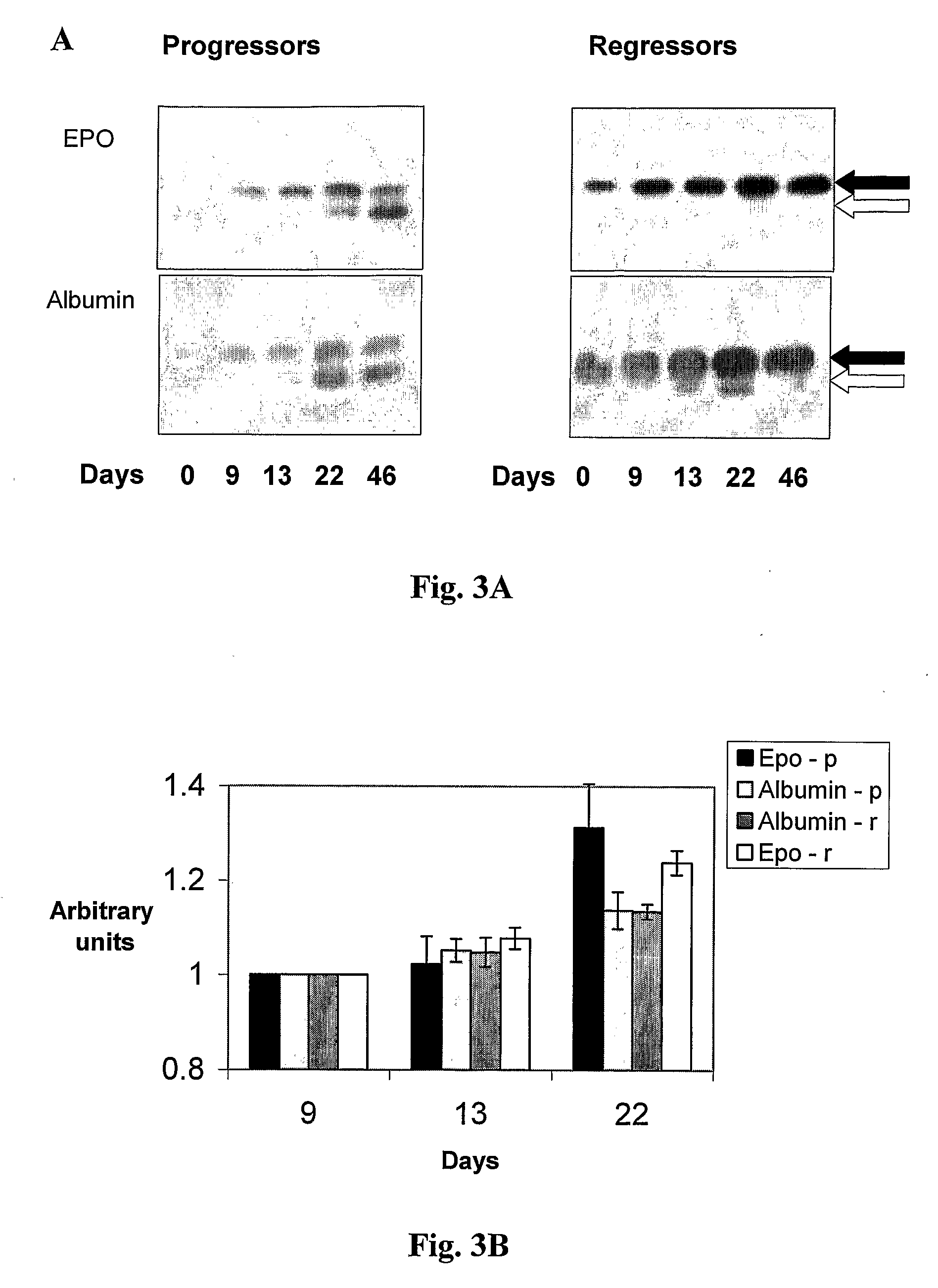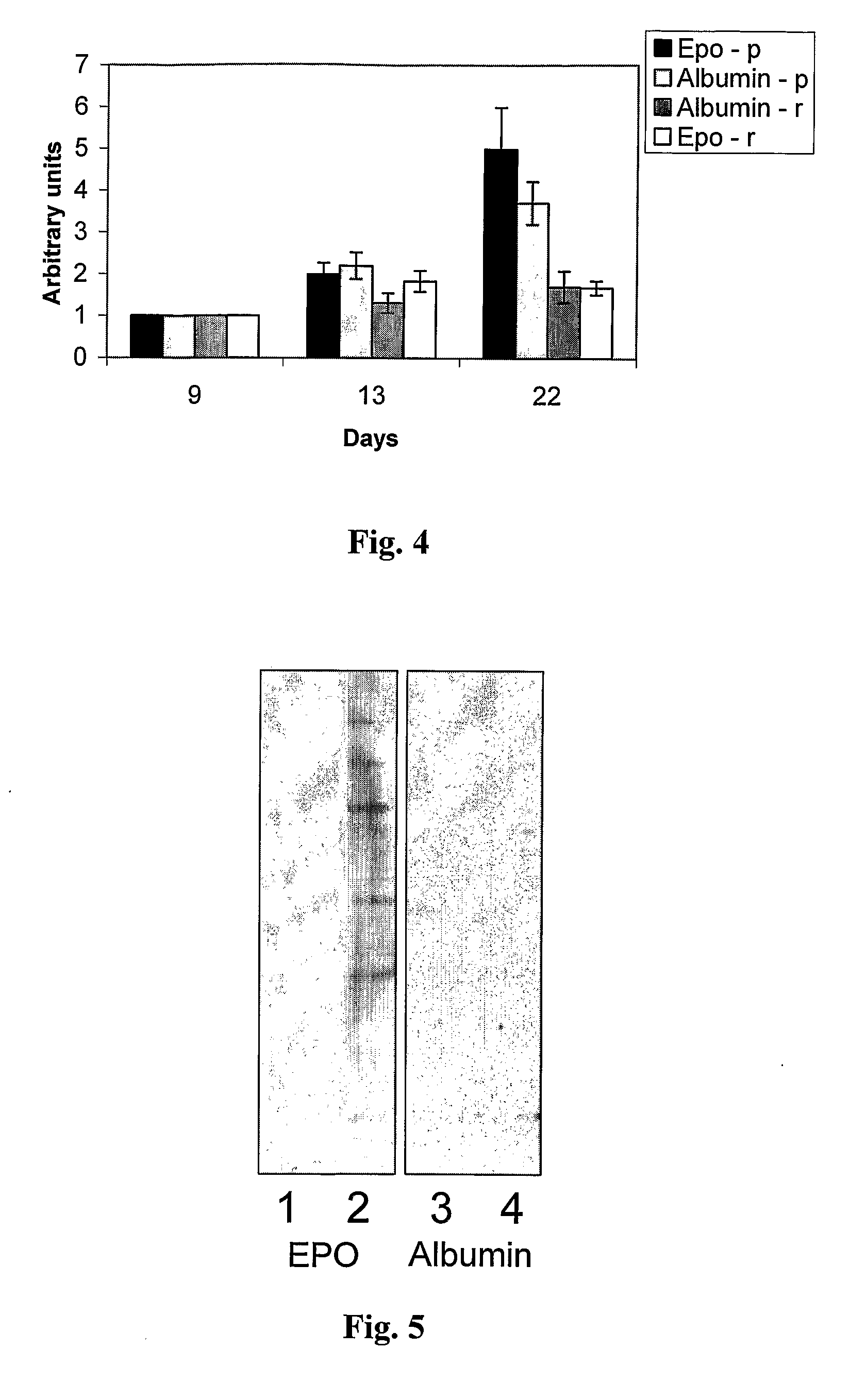Use of Erythropoietin for Enhancing Immune Responses and for Treatment of Lymphoproliferative Disorders
- Summary
- Abstract
- Description
- Claims
- Application Information
AI Technical Summary
Benefits of technology
Problems solved by technology
Method used
Image
Examples
example 1
Treatment with EPO Prolongs the Survival of MOPC-315 Bearing Mice
[0054]The experimental system of the MOPC-315 tumor was set up as described in Materials and Methods above. Thirty mice (15 in each group) BALB / c were injected subcutaneously (s.c.) with 104 MOPC-315 cells in the abdominal area. Local tumor growth (2-5 mm diameter) was observed 11-13 days after injection, gradually growing in size and causing death in 90-100% of mice 40-50 days after injection. Subcutaneous rHuEPO treatment was initiated when a tiny palpable tumor appeared at the site of injection. Each mouse was numbered and a follow-up of tumor size in individual mice was carried out every day during EPO administration.
[0055]Treatment with EPO was conducted as described in WO 99 / 52543, namely, 30 units of rHuEPO were injected s.c. in the back of MOPC-315-bearing mice, 9 days following tumor injection. As the EPO preparation contains high amounts of albumin (×1000 higher than the EPO), the control mice were injected w...
example 3
EPO Treatment Results in Elevation of Endogenous (non-pathological) λ Light Chain
[0058]The mouse myeloma MOPC-315 cells synthesize and secrete immunoglobulin IgA with λ2 light chain and an α heavy chain. The molecular weight of this light chain is slightly lower than that of the endogenous λ light chain, thereby enabling to differentiate between the multiple myeloma derived λ light chain and the normal endogenous λ light chain by Western blot analysis. Sera from regressor or progressor mice in both EPO treated and control groups were collected at various time points. The serum born λ light chains (both endogenous and derived from the MOPC 315 cells) was resolved by SDS-polyacrylamide gel electrophoresis and detected by Western blot analysis with anti λ light chain antibodies.
[0059]40 mice were injected with 104 MOPC-315 cells s.c. and after 9 days treated with either EPO or EPO diluting solution only. Sera was collected at various time points and analyzed by Western blots for λ immu...
example 4
EPO Increases Anti-MOPC-315 Antibody Production in MOPC-315 Injected Mice
[0064]The preceding results show that EPO enhances the levels of the endogenous λ light chain, in the serum of EPO treated mice. The following analysis was carried out in order to explore whether EPO treatment also augments the levels of specific antibody production in MOPC-315 injected mice.
[0065]Lysates from MOPC-315 cells were resolved on SDS-PAGE and subjected to Western blot analysis detected with antisera obtained from an EPO- or an albumin-treated regressor mice. The results are summarized in FIG. 5. The results show that sera from both mice collected before tumor injection (lane 1 and 3) did not react with the MOPC-315 cell lysates in the blot. On the other hand, serum from the EPO-treated mouse (lane 2) displayed a higher reactivity with the MOPC-315 cell lysate compared to the serum from its albumin-treated counterpart (lane 4). Therefore, the results obtained indicate that the EPO treatment also augm...
PUM
 Login to View More
Login to View More Abstract
Description
Claims
Application Information
 Login to View More
Login to View More - R&D
- Intellectual Property
- Life Sciences
- Materials
- Tech Scout
- Unparalleled Data Quality
- Higher Quality Content
- 60% Fewer Hallucinations
Browse by: Latest US Patents, China's latest patents, Technical Efficacy Thesaurus, Application Domain, Technology Topic, Popular Technical Reports.
© 2025 PatSnap. All rights reserved.Legal|Privacy policy|Modern Slavery Act Transparency Statement|Sitemap|About US| Contact US: help@patsnap.com



